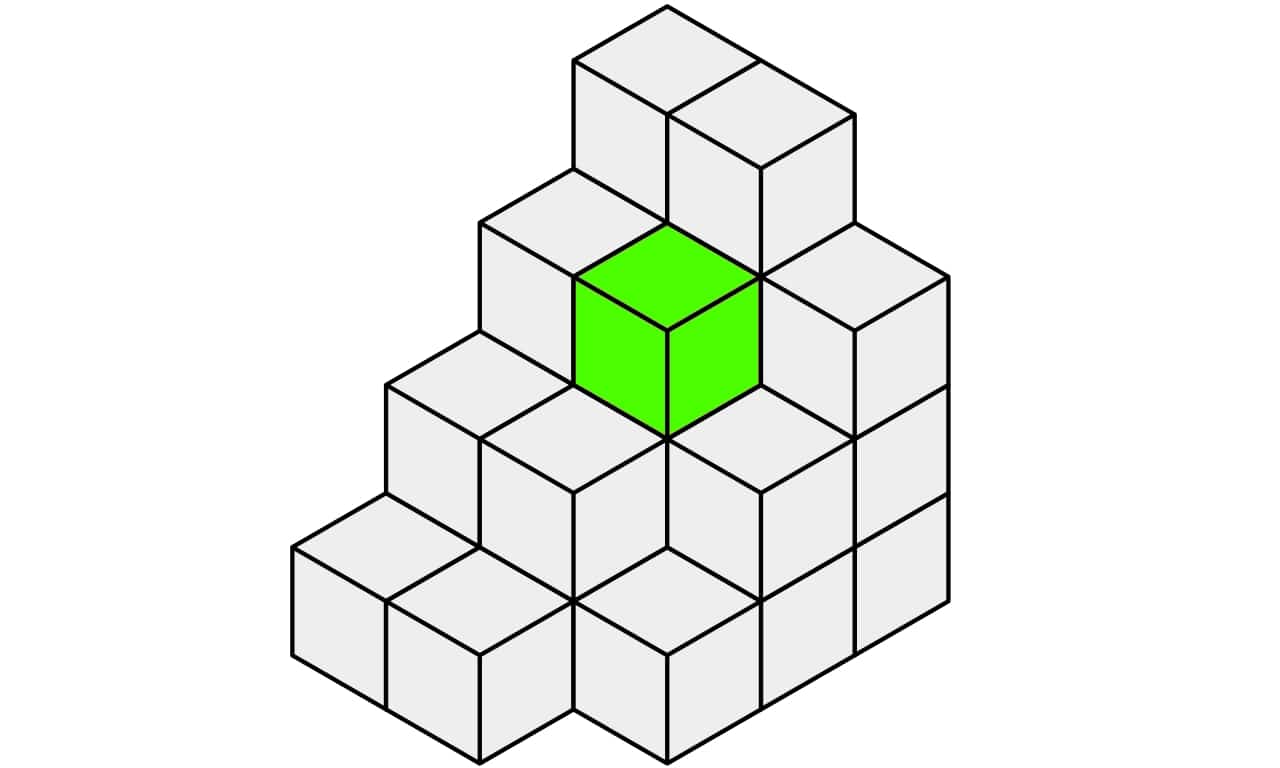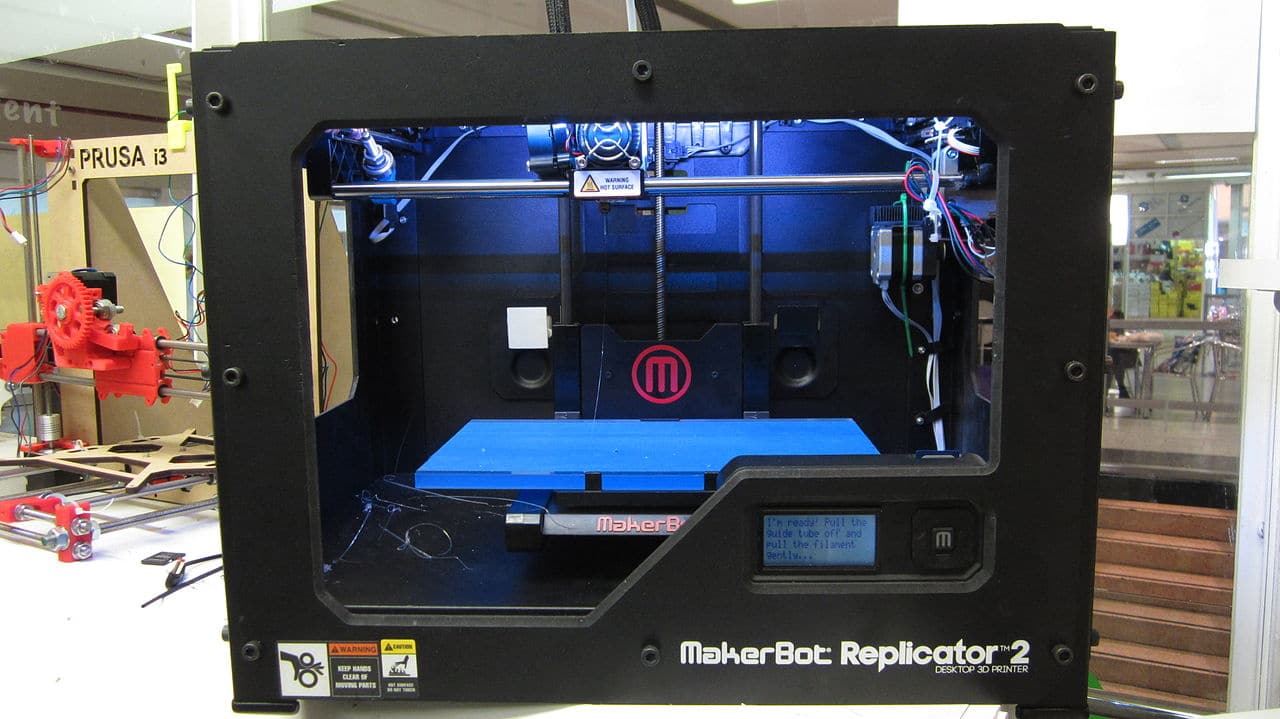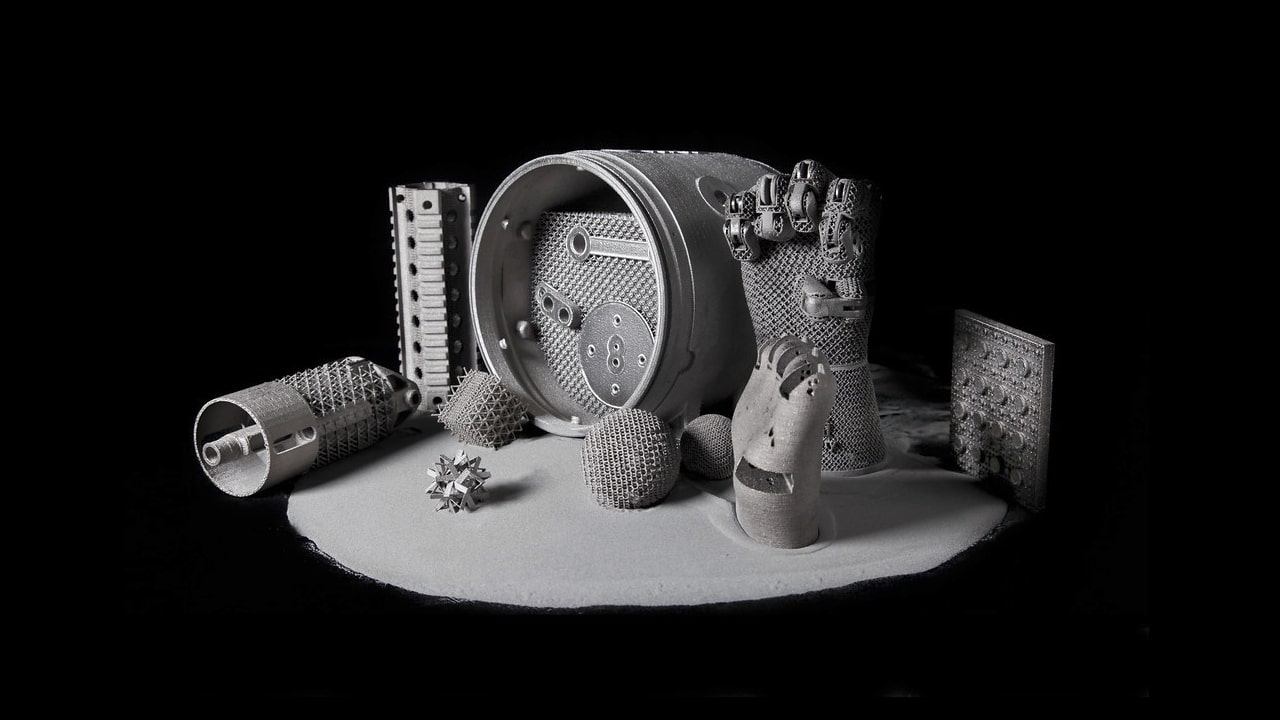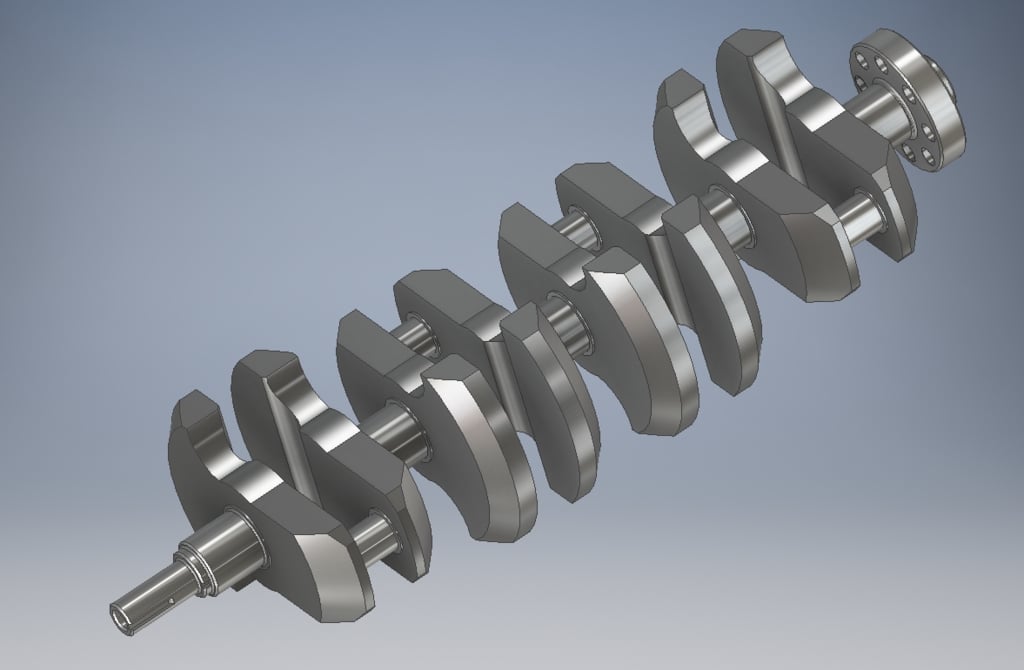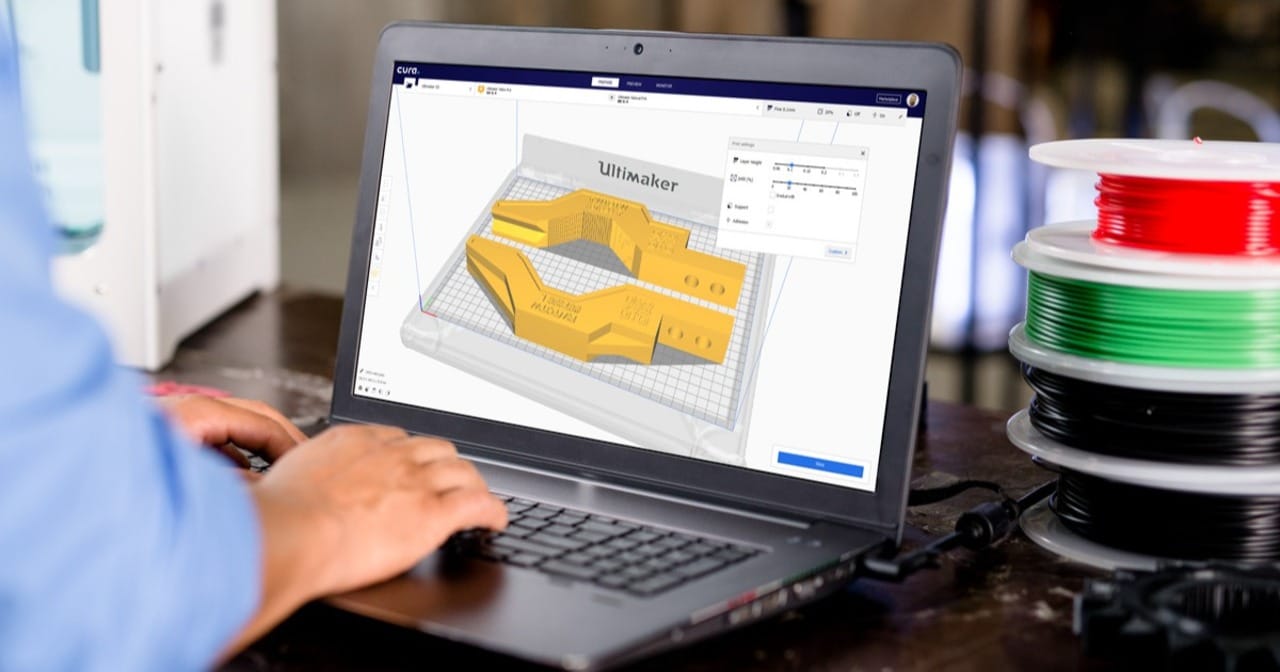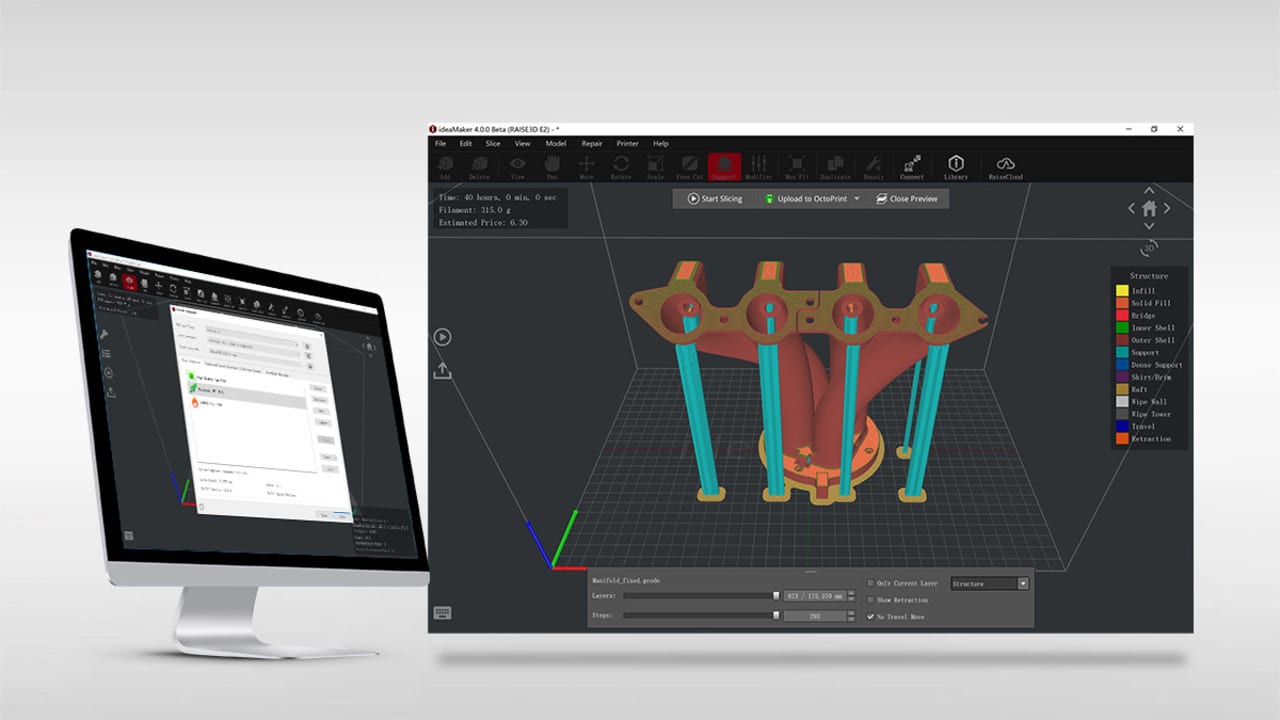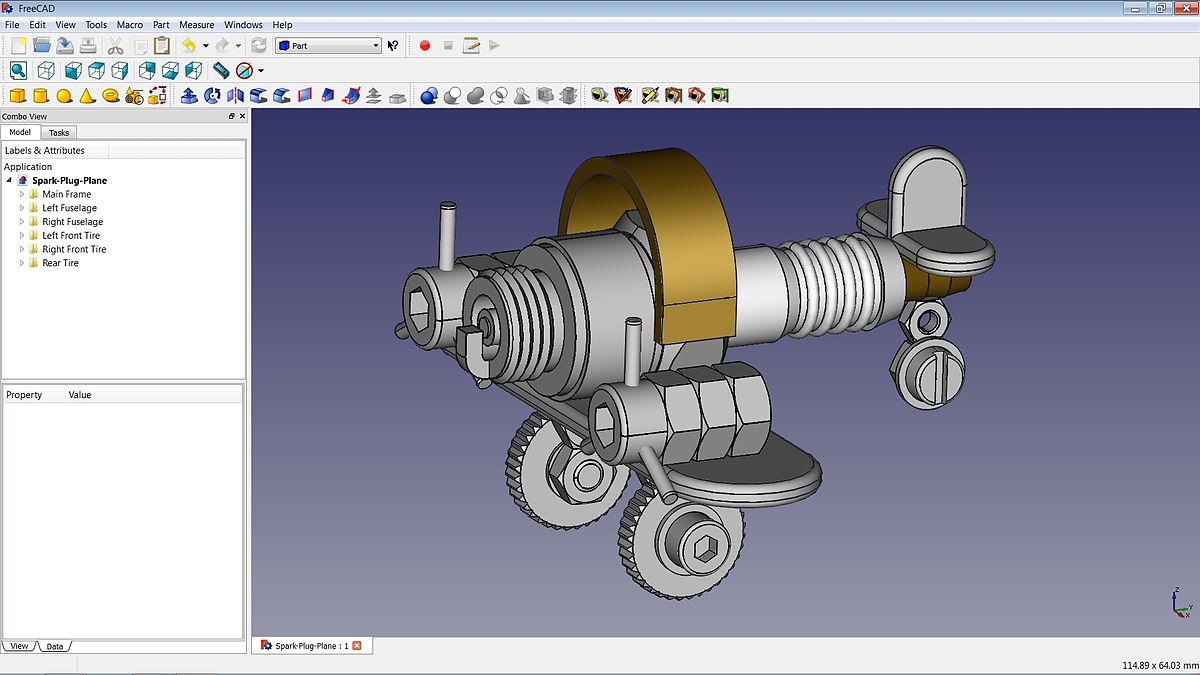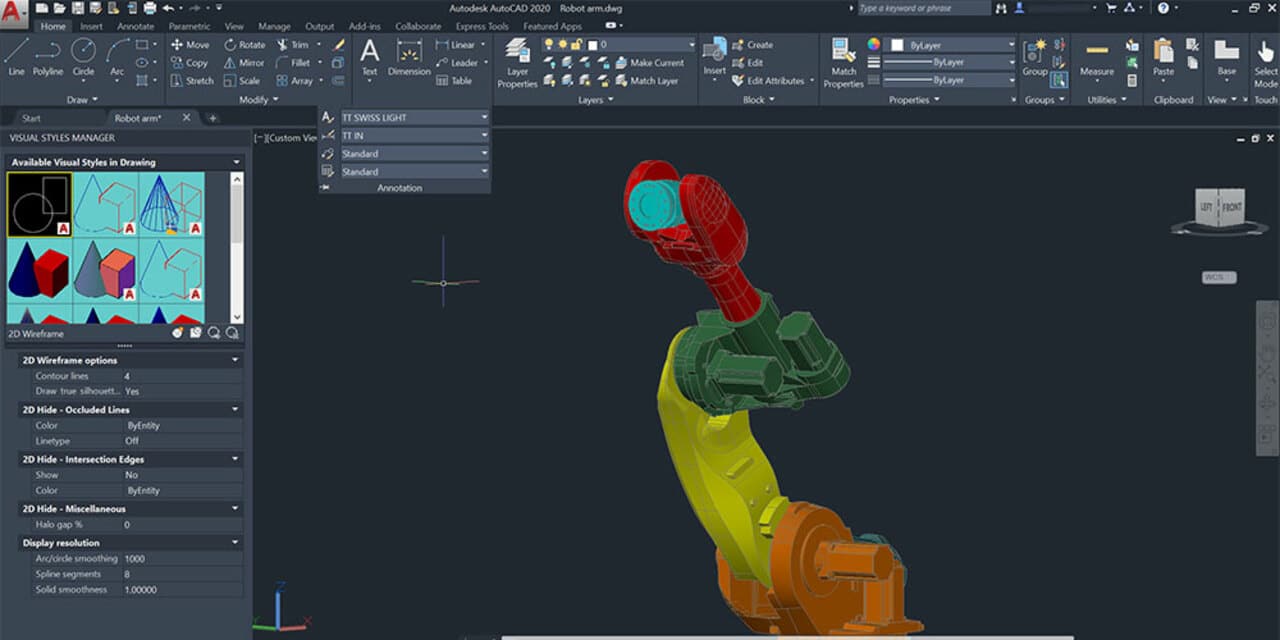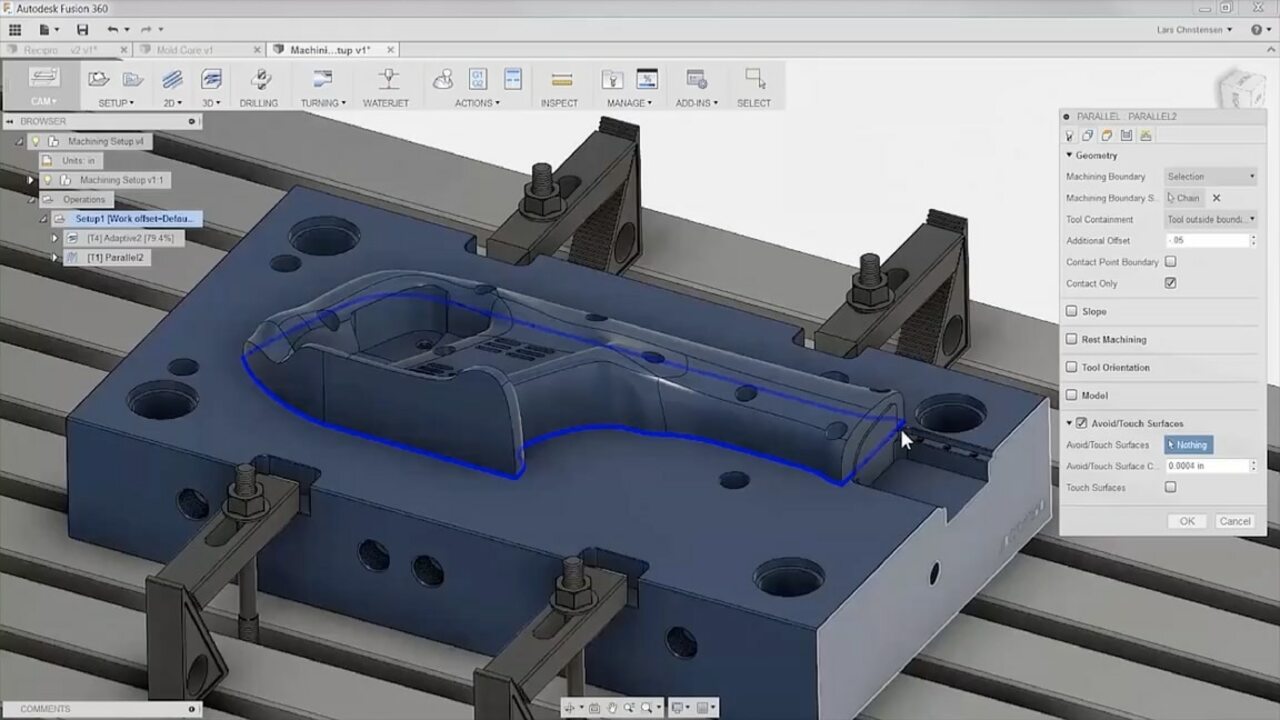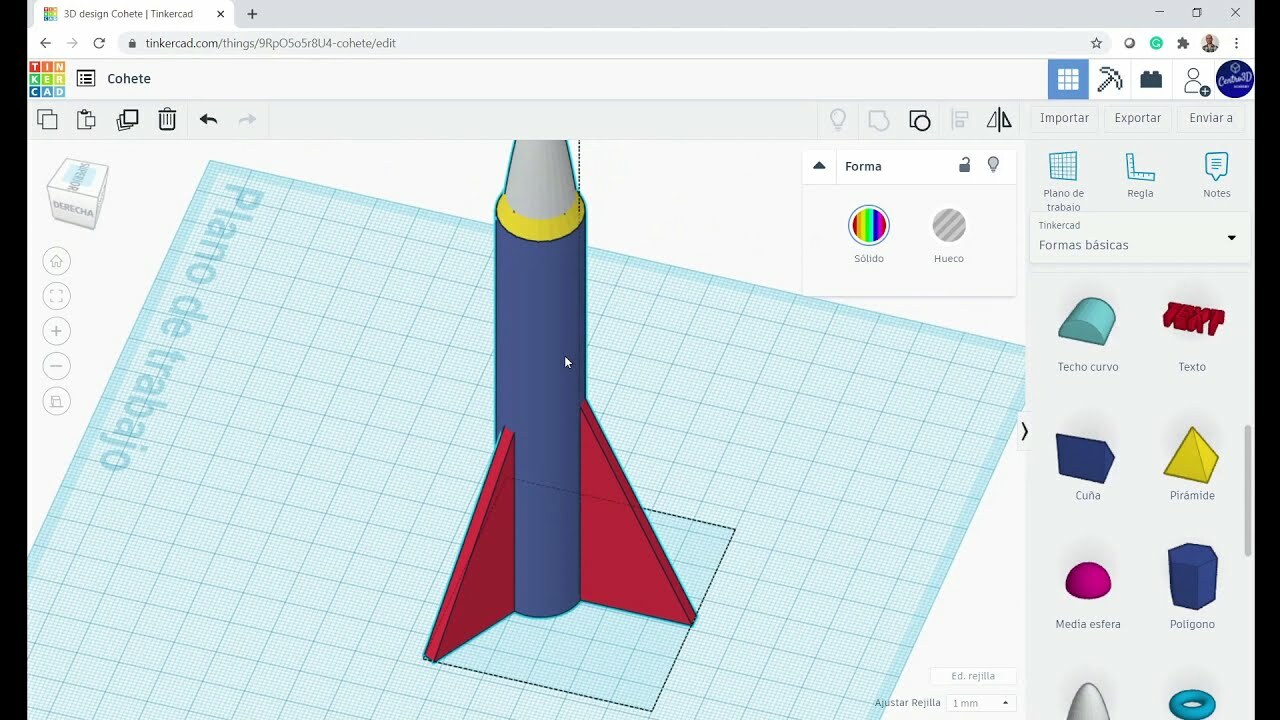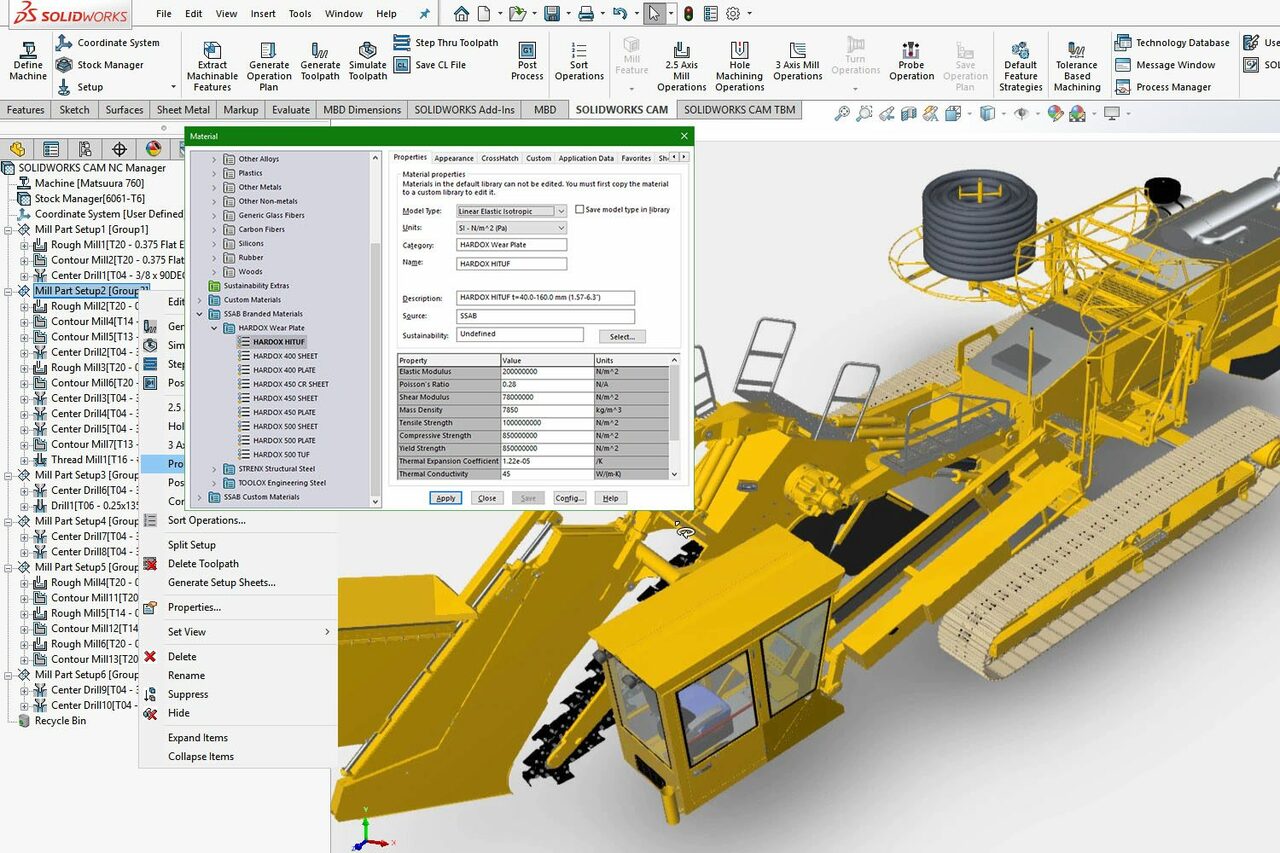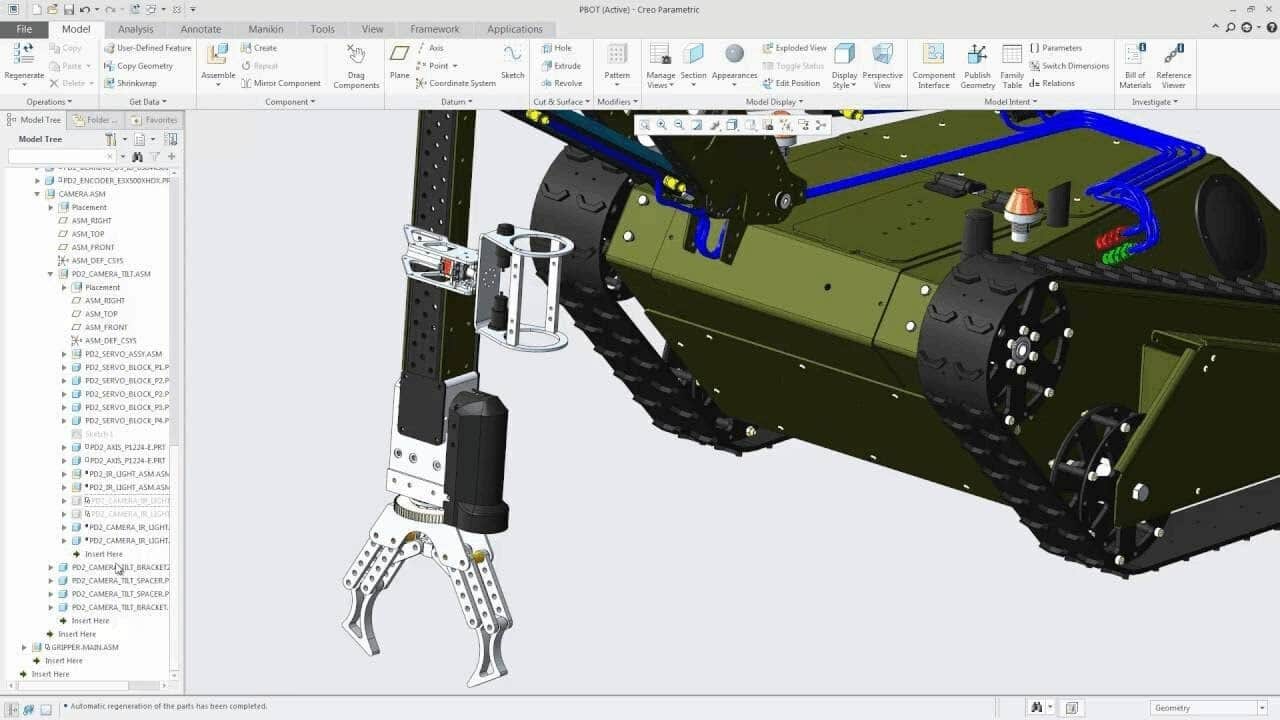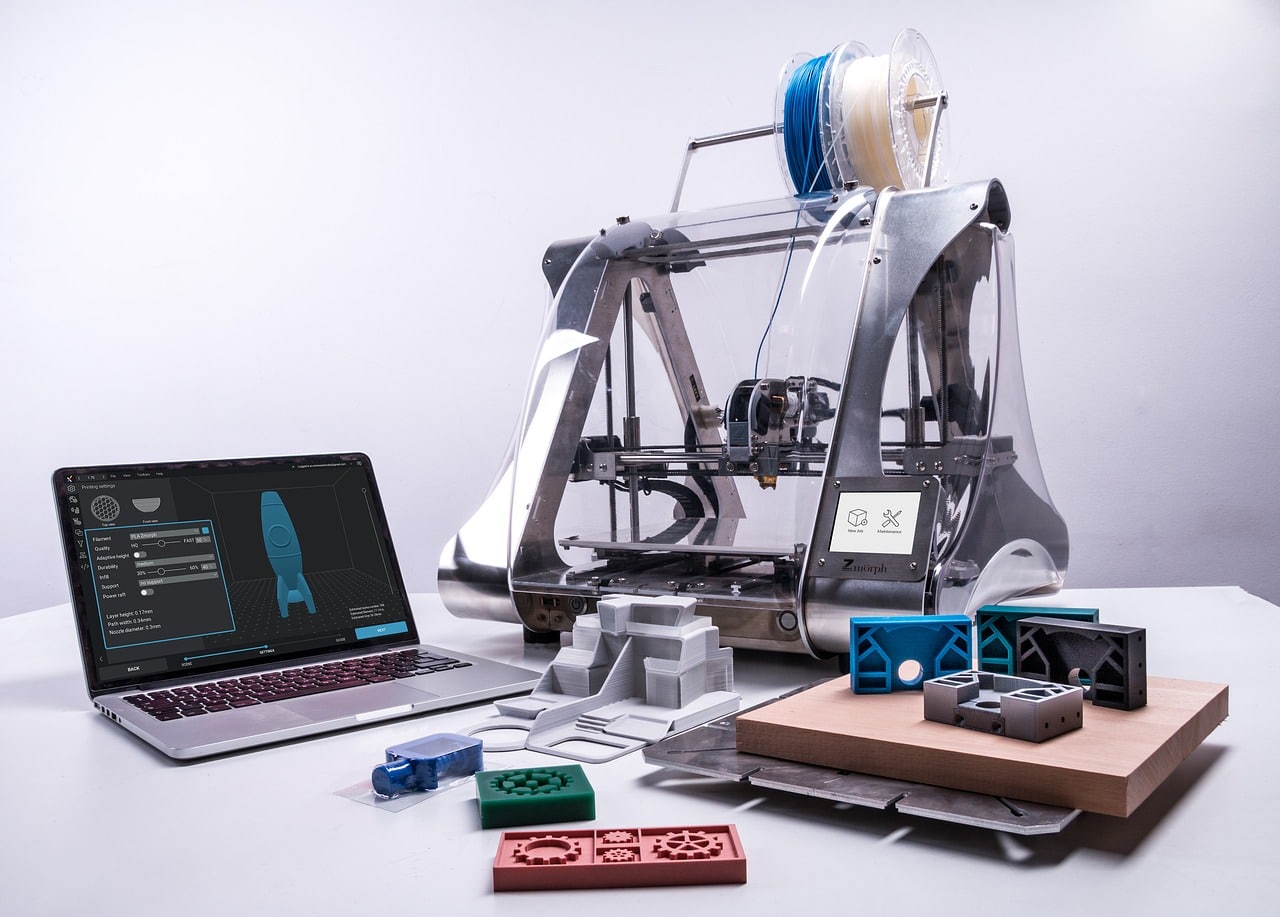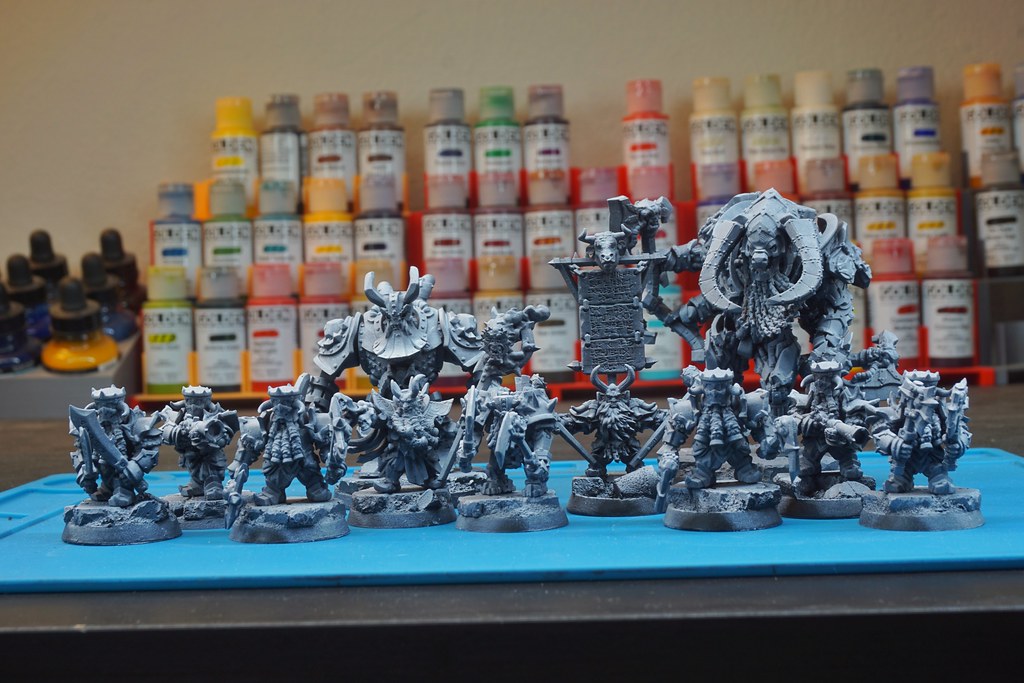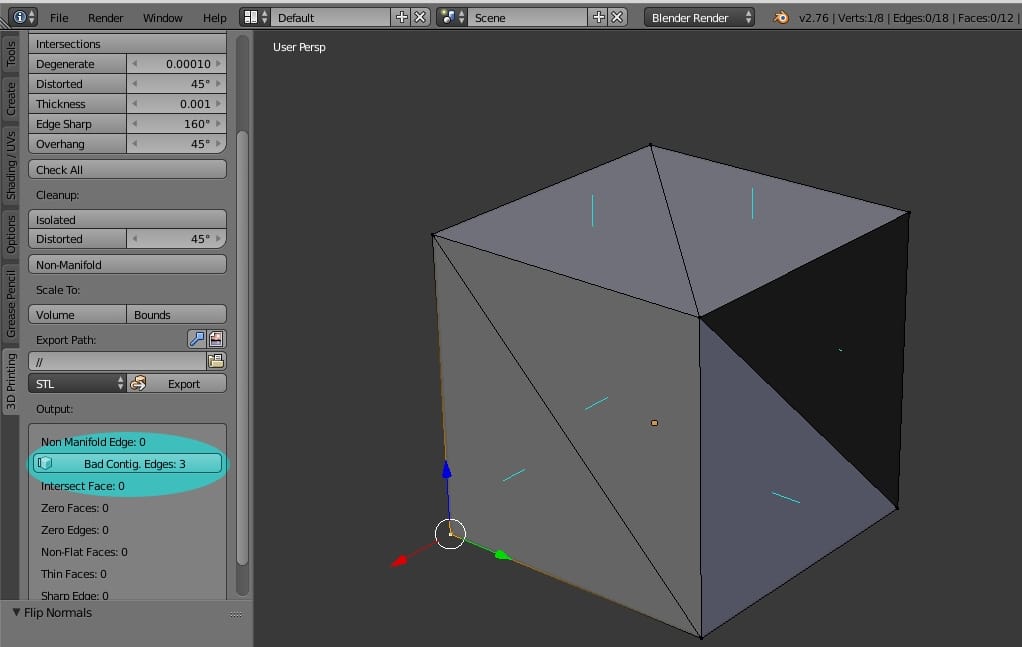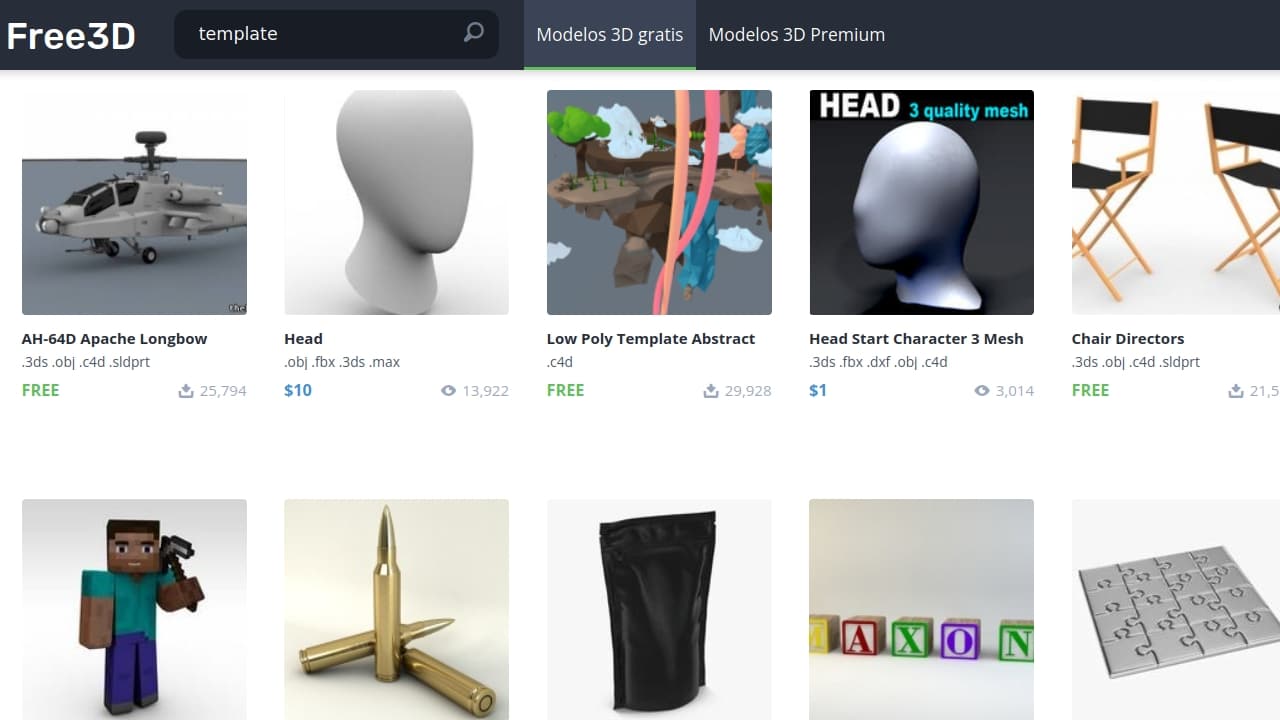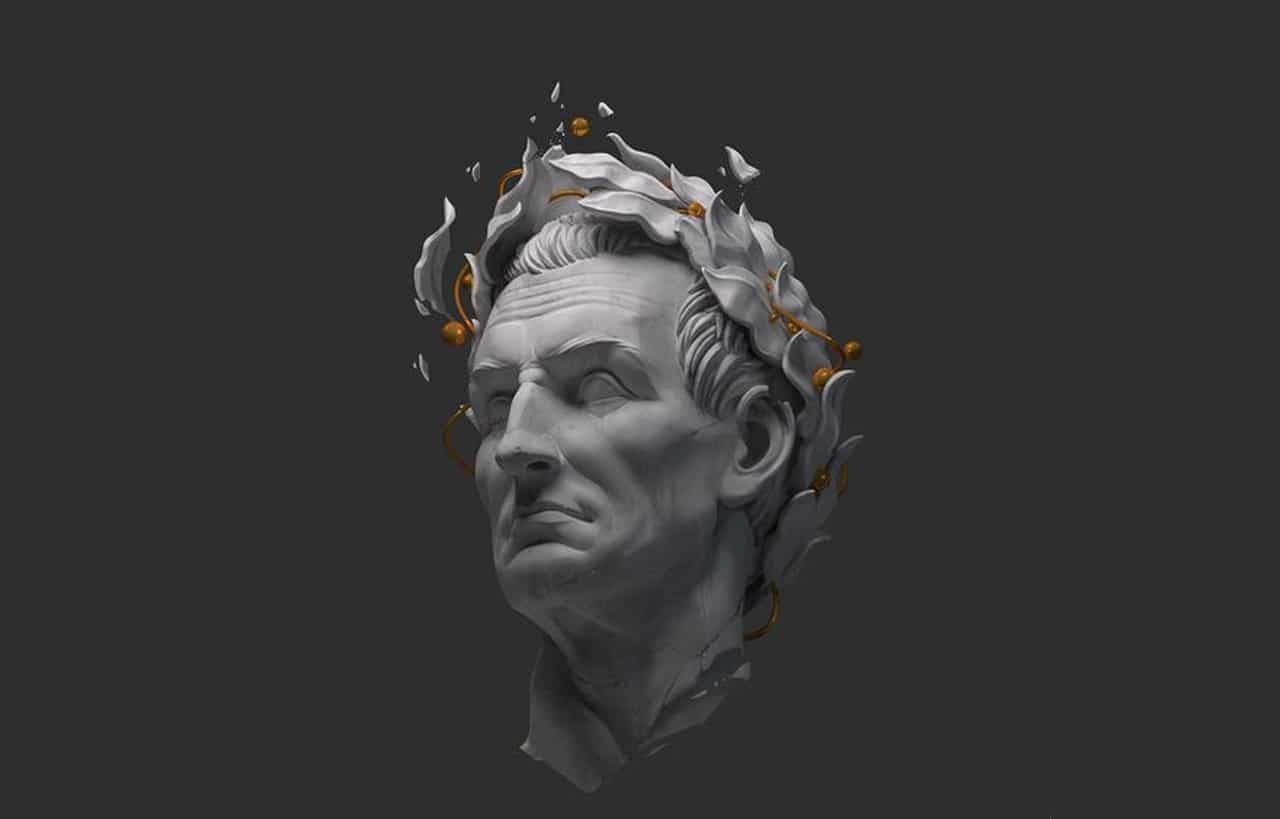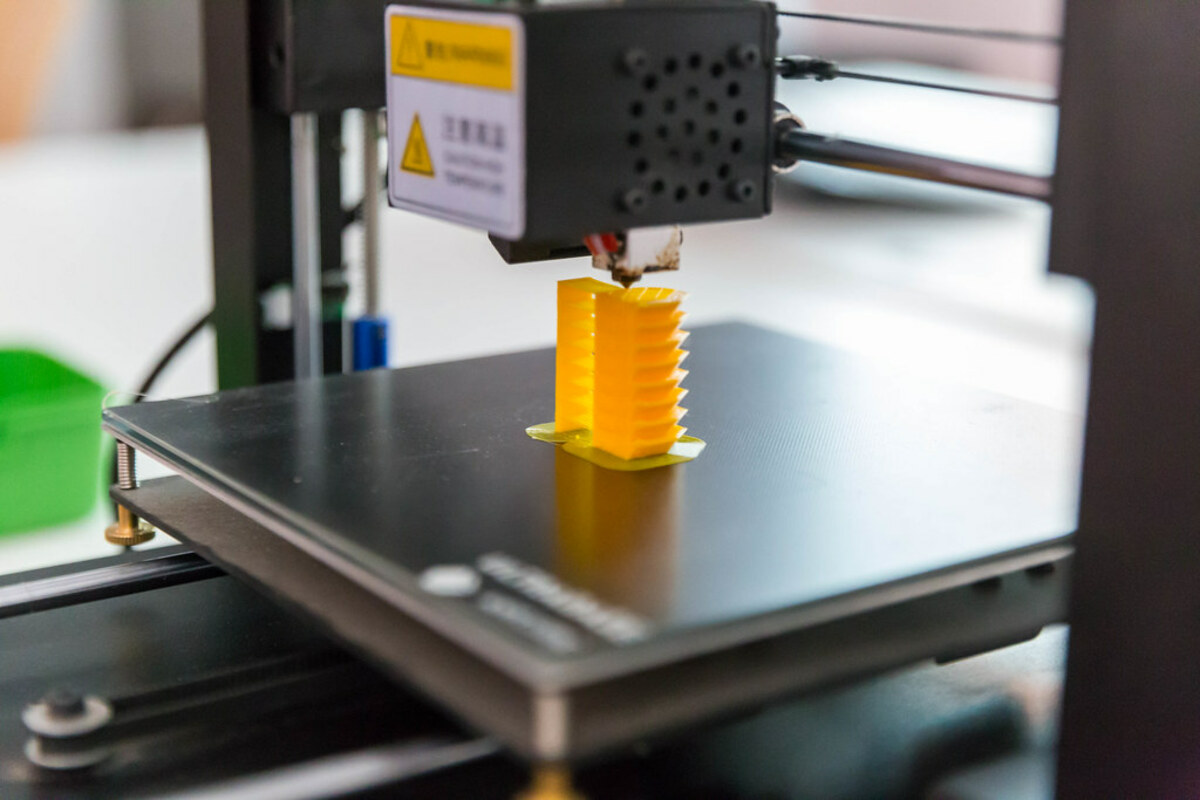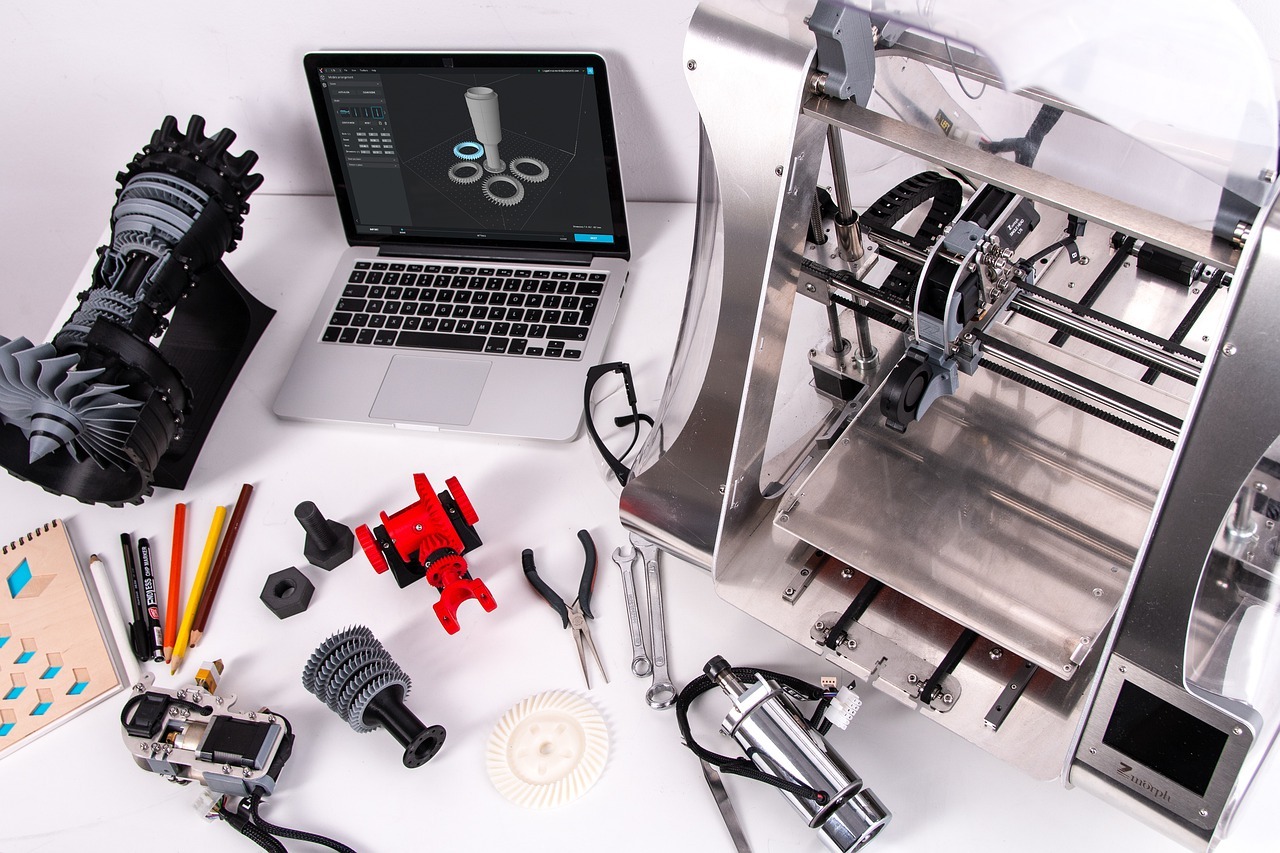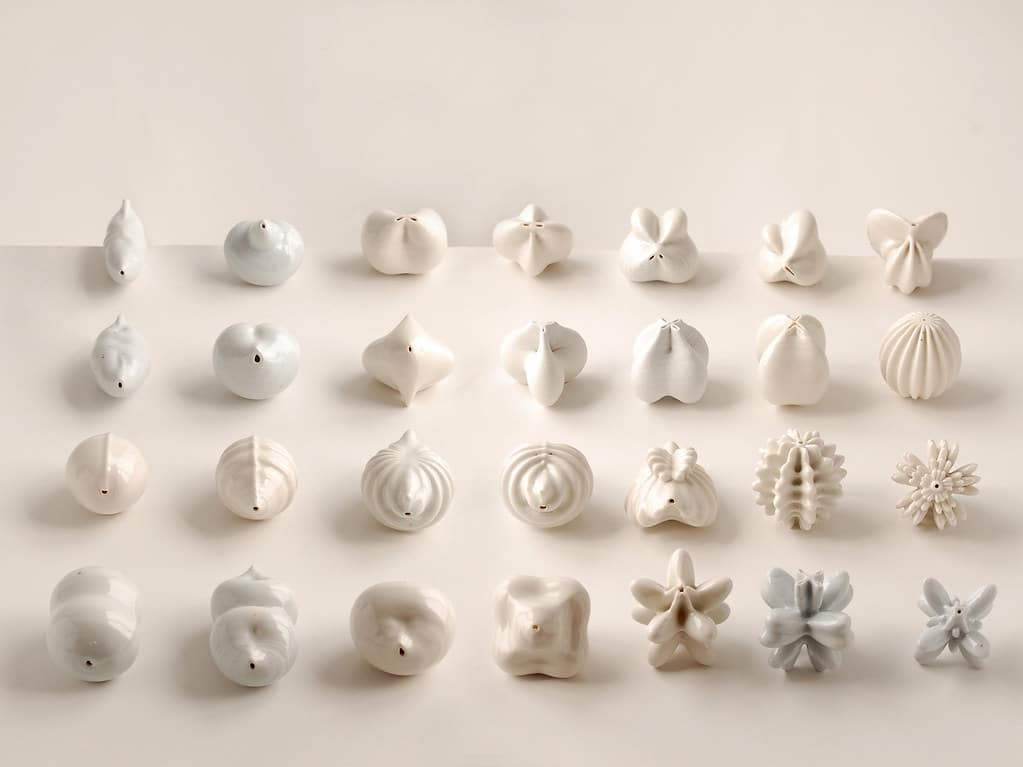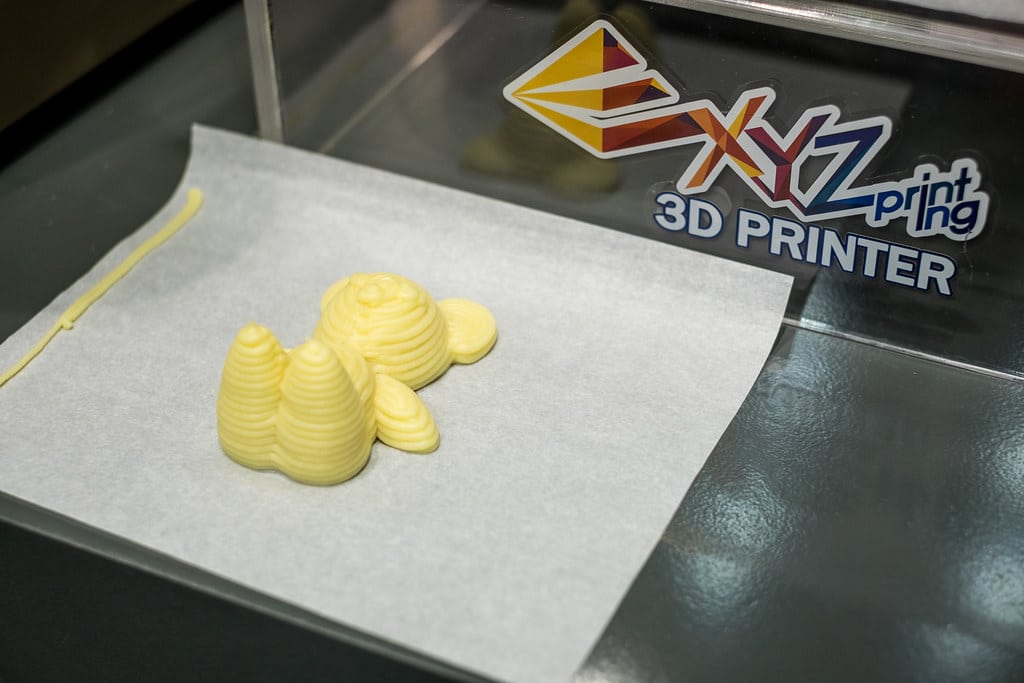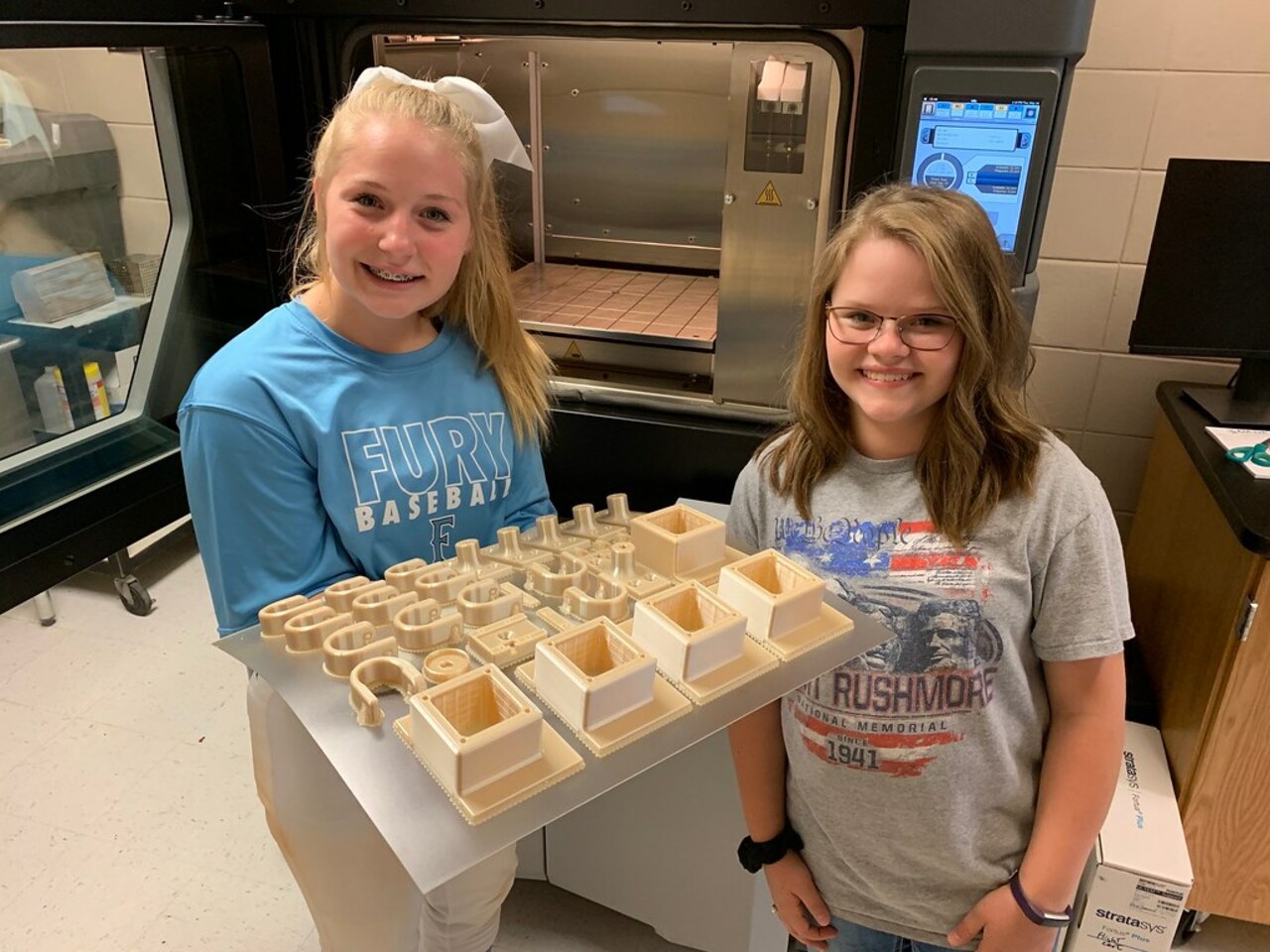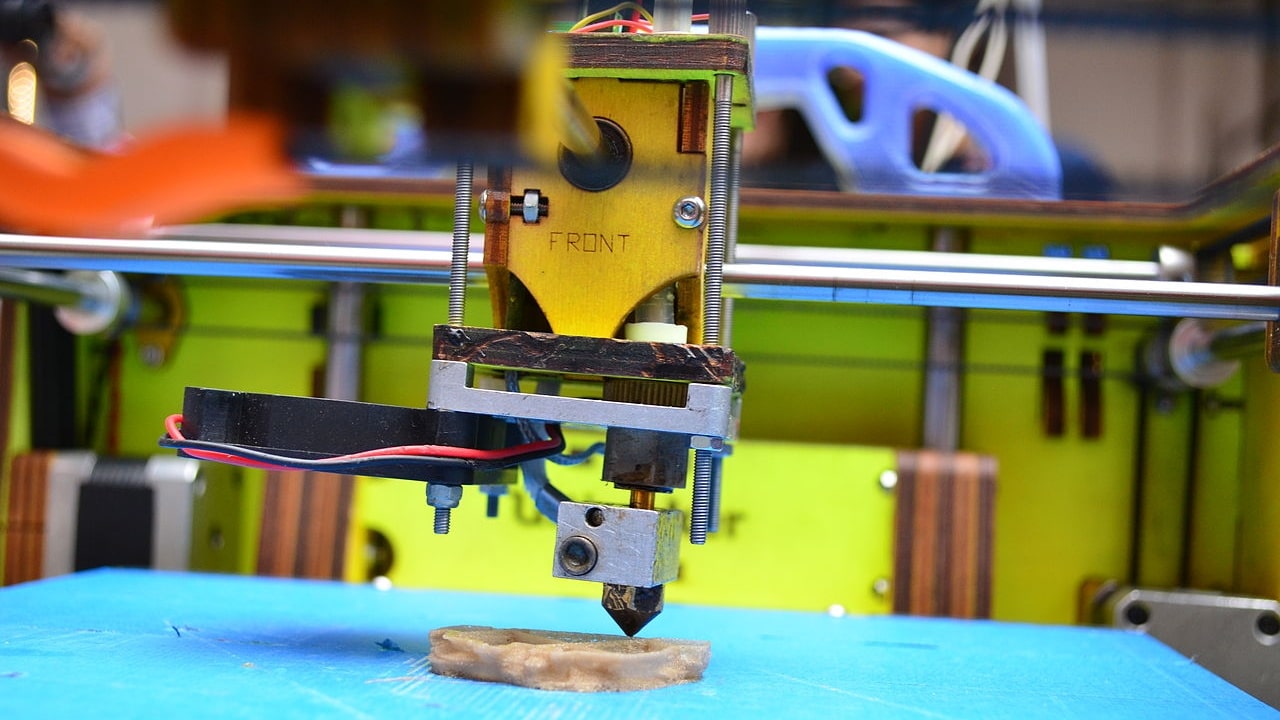
Additive manufacturing has more and more fields of application, both in the leisure sector and in industry and technology. 3D printers have come to revolutionize the way you print and they build new structures, which can range from small objects to living tissue and even houses, or aerodynamic parts for motorsport.
Until a few years ago, 2D printing was the stuff of science fiction. Many dreamed of being able to print objects instead of images or text on simple XNUMXD paper. Now the technology is so mature that there are countless technologies, brands, models, etc. In this guide you can learn much more about these peculiar printers.
What is a voxel?
If you are not yet familiar with the voxel, it is important that you understand what it is, since in 3D printing it is important. It is the abbreviation of the English «volumetric pixel», a cubic unit that makes up a three-dimensional object.
In other words, it would be the 2D equivalent of a pixel. And, as you can see in the image above, if that 3D model is divided into cubes, each one of them would be a voxel. It is important to specify what it is, since some advanced 3D printers allow the control of each voxel during printing to achieve better results.
What is a 3D printer
A 3D printer is a machine capable of printing objects with volume from a computer design. That is, like a conventional printer, but instead of printing on a flat surface and in 2D, it does with three dimensions (width, length and height)). The designs from which these results can be achieved can come from a 3D or CAD model, and even from a real physical object that has been XNUMXD scan.
And they can print all kinds of things, from objects as simple as a cup of coffee, to much more complex ones such as living tissues, houses, etc. In other words, the dream of many who wanted their printed drawings to come to life from paper is here, and they are cheap enough to be used beyond industry, also at home.
History of 3D printing
The history of 3D printing seems very recent, but the truth is that it must go back a few decades. Everything arises from inkjet printer from 1976, from which progress has been made to replace printing ink with materials to generate objects with volume, taking important steps and marking milestones in the development of this technology up to the current machines:
- In 1981 the first 3D printing device was patented. he did it Dr Hideo Kodama, of the Nagoya Municipal Industrial Research Institute (Japan). The idea was to use 2 different methods he invented for additive manufacturing using photosensitive resin, similar to how chips are made. However, his project would be abandoned due to lack of interest and funding.
- In this same decade, French engineers Alain Le Méhauté, Olivier de Wittte and Jean-Claude André, began to investigate the technology of manufacturing by solidification of photosensitive resins with UV curing. The CNRS would not approve the project due to lack of application areas. And, although they applied for a patent in 1984, it would eventually be abandoned.
- charles hullIn 1984, he would co-found the company 3D Systems, inventing stereolithography (SLA). It is a process by which a 3D object can be printed from a digital model.
- La first SLA type 3D machine It began to be marketed in 1992, but its prices were quite high and it was still very basic equipment.
- In 1999 another great milestone was marked, this time referring to bioprinting, being able to generate a human organ in a laboratory, specifically a urinary bladder using a synthetic coating with the stem cells themselves. This milestone has its origin in the Wake Forest Institute for Regenerative Medicine, opening the doors to manufacturing organs for transplants.
- El 3D printed kidney would arrive in 2002. It was a fully functional model with the ability to filter blood and produce urine in an animal. This development was also created in the same institute.
- Adrian Bowyer founds RepRap at the University of Bath in 2005. It is an open source initiative to build cheap 3D printers that are self-replicating, that is, they can print their own parts and using consumables such as 3D filaments.
- A year later, in 2006, SLS technology arrives and the possibility of mass manufacturing thanks to the laser. With it, the doors to industrial use are opened.
- 2008 would be the year of the first printer with self-replicating ability. It was the Darwin of RepRap. In this same year, co-creation services also began, websites where communities could share their 3D designs so that others could print them on their own 3D printers.
- Significant progress has also been made in the 3D prosthetics permit. 2008 will be the year that the first person will be able to walk thanks to a printed prosthetic leg.
- 2009 is the year of Makerbot and kits of 3D printers, so that many users could buy them cheap and build their own printer themselves. That is, oriented to makers and DIY. That same year, Dr. Gabor Forgacs makes another big step in bioprinting, being able to create blood vessels.
- El first printed plane in 3D would arrive in 2011, created by engineers from the University of Southampton. It was an unmanned design, but it could be manufactured in just 7 days and with a budget of €7000. This opened the ban for the manufacture of many other products. In fact, this same year the first printed car prototype would arrive, the Kor Ecologic Urbee, with prices between €12.000 and €60.000.
- At the same time, printing began using noble materials such as sterling silver and 14kt gold, thus opening a new market for jewelers, being able to create cheaper pieces using the precise material.
- In 2012 it would arrive the first prosthetic jaw implant 3D printed thanks to a group of Belgian and Dutch researchers.
- And currently the market does not stop finding new applications, improve their performance, and to continue expanding by businesses and homes.
Currently, if you are wondering how much does a 3d printer cost, can range from just over €100 or €200 in the case of the cheapest and smallest, to €1000 or more in the case of the most advanced and larger, and even some that cost thousands of euros for the sector industrial.
What is additive manufacturing or AM
3D printing is nothing more than an additive manufacturing, that is, a manufacturing process that, in order to create 3D models, overlaps layers of material. Quite the opposite of subtractive manufacturing, which is based on an initial block (sheet, ingot, block, bar,...) from which material is removed until the final product is achieved. For example, as subtractive manufacturing you have a piece carved on a lathe, which starts with a block of wood.
Thanks to this revolutionary method you can get cheap production of objects at home, models for engineers and architects, obtain prototypes for testing, etc. In addition, this additive manufacturing has made it possible to create parts that were previously impossible by other methods such as molds, extrusion, etc.
What is bioprinting
Bioprinting is a special type of additive manufacturing, also created with 3D printers, but whose results are very different from inert materials. May make living tissues and organs, from a human skin to a vital organ. They can also manufacture biocompatible materials, such as those for prostheses or implants.
This can be achieved from two methods:
- A structure, a kind of support or scaffold is built of composites biocompatible polymers that they are not rejected by the body, and that the cells will accept them. These structures are introduced into a bioreactor so that they can be populated by cells and once inserted into the body, they will gradually make way for the cells of the host organism.
- It is an impression of organs or tissues layer by layer, but instead of using materials such as plastics, or others, live cell cultures and a fastening method called biopaper (biodegradable material) to shape.
How 3D printers work
El how a 3d printer works It is much simpler than it may seem:
- You can start from scratch with software to 3d modeling or CAD design to generate the model you want, or download a file already created, and even use a 3D scanner to obtain the 3D model from a real physical object.
- Now you have the 3D model stored in a digital file, that is, from digital information with the dimensions and shapes of the object.
- The next is slicing, a process in which the 3D model is "cut" into hundreds or thousands of layers or slices. That is, how to slice the model by software.
- When the user clicks on the print button, the 3D printer connected to the PC via USB cable, or network, or the file passed on an SD card or pen drive, will be interpreted by the printer processor.
- From there, the printer will go controlling the motors to move the head and thus generate layer by layer until the final model is achieved. Similar to a conventional printer, but the volume will grow layer by layer.
- The way those layers are generated may vary by technology that have 3D printers. For example, they can be by extrusion or by resin.
3D design and 3D printing
Once you know what a 3D printer is and how it works, the next thing is know the necessary software or tools for printing. Something essential if you want to go from a sketch or idea to a real 3D object.
You should know that there are several fundamental types of software for 3D printers:
- On the one hand there are the programs of 3D modeling or 3D CAD design with which a user can create the designs from scratch, or modify them.
- On the other hand there is the so-called slicer software, which converts the 3D model into specific instructions to be printed on the 3D printer.
- There is also the mesh modification software. These programs, such as MeshLab, are used to modify the meshes of 3D models when they cause problems when printing them, since other programs may not take into account the way 3D printers work.
3D printer software
Here are some of the best 3d printing software, both paid and free, for 3d modeling y CAD design, as well as free or open source software:
Sketchup
Google and Last Software created SketchUp, although it finally passed into the hands of the Trimble company. It is proprietary and free software (with different types of payment plans) and also with the possibility of choosing between using it on the Windows desktop or on the web (any operating system with a compatible web browser).
This program of graphic design and 3D modeling is one of the best. With it you can create all kinds of structures, although it is specially designed for architectural designs, industrial design, etc.
Ultimaker Cure
Ultimaker has created Cura, an application specially designed for 3D printers with which printing parameters can be modified and transformed into G code. It was created by David Raan while he was working in this company, although for easier maintenance he would open its code under the LGPLv3 license. It is now open source, enabling greater compatibility with third party CAD software.
Nowadays, it is so popular that it is a of the most used in the world, with more than 1 million users from different sectors.
prusaslicer
The Prusa company has also wanted to create its own software. It is the open source tool called PrusaSlicer. This app is very rich in terms of functions and features, and has a fairly active development.
With this program you will be able to export 3D models to native files that can be adapted to the original Prusa printers.
ideamaker
This other program is free, and can be installed on both Microsoft Windows, macOS, and on GNU/Linux. Ideamaker is specially designed for Raise3D products, and it is another slicer with which you can manage your prototypes for printing in an agile way.
freecad
FreeCAD needs few introductions, it is an open source project and totally free for design 3D CAD. With it you can create any model, as you would in Autodesk AutoCAD, the paid version and proprietary code.
It is simple to use, and with an intuitive interface and rich in tools to work with. That is why it is one of the most used. It is based on OpenCASCADE and is written in C++ and Python, under the GNU GPL license.
Blender
Another great acquaintance in the world of free software. This great software is used even by many professionals, given the power and results it offers. Available on multiple platforms, such as Windows and Linux, and under the GPL license.
But the most important thing about this software is that it not only serves to lighting, rendering, animation and creation of three-dimensional graphics for animated videos, video games, paintings, etc., but you can also use it for 3D modeling and create what you need to print.
Autodesk AutoCAD
It is a platform similar to FreeCAD, but it is proprietary and paid software. Your licenses have a high price, but it is one of the most used programs at a professional level. With this software you will be able to create both 2D and 3D CAD designs, adding mobility, numerous textures to materials, etc.
It is available for Microsoft Windows, and one of its advantages is compatibility with DWF files, which are one of the most widespread and developed by the Autodesk company itself.
Autodesk Fusion 360
Autodesk Fusion 360 It has many similarities with AutoCAD, but it is based on a cloud platform, so you can work from wherever you want and always have the most advanced version of this software. In this case, you will also have to pay subscriptions, which are not exactly cheap either.
Tinkercad
TinkerCAD is another 3D modeling program that can be used online, from a web browser, which greatly opens up the possibilities of using it from wherever you need. Since 2011 it has been gaining users, and has become a very popular platform among users of 3D printers, and even in educational centers, since its learning curve is much easier than that of Autodesk.
mesh lab
It is available for Linux, Windows, and macOS, and is completely free and open source. MeshLab is a 3D mesh processing software system. The goal of this software is to manage these structures for editing, repair, inspection, rendering, etc.
SolidWorks
The European company Dassault Systèmes, from its subsidiary SolidWorks Corp., has developed one of the best and most professional CAD software for 2D and 3D modeling. SolidWorks may be an alternative to Autodesk AutoCAD, but it is specially designed for modeling mechanical systems. It is not free, nor is it open source, and it is available for Windows.
Creo
Finally, Creo is another of the best CAD/CAM/CAE software for 3D printers you can find. It is a software created by PTC and that allows you to design a multitude of high-quality products, quickly and with little work. All thanks to its intuitive interface designed to improve usability and productivity. You can develop parts for additive and subtractive manufacturing, as well as for simulation, generative design, etc. It is paid, closed source and only for Windows.
3D printing
The next step to design using the above software is the actual printing. That is, when from that file with the model the 3D printer starts to generate the layers until completing the model and obtaining the real design.
This process may take more or less, depending on the printing speed, the complexity of the piece, and its size. But it could go from a few minutes to hours. During this process, the printer can be left unattended, although it is always positive to monitor the work from time to time to prevent problems from ending up affecting the final result.
post-process
Of course, once the part is finished printing on the 3D printer, the job doesn't end there in most cases. Then others usually come additional steps known as post-processing on the table:
- Eliminate some parts that need to be generated and that are not part of the final model, such as a base or support that is needed for the part to stand.
- Sand or polish the surface to achieve a better final finish.
- Surface treatment of the object, such as varnishing, painting, baths, etc.
- Some pieces, like metal pieces, might even need other processes like baking.
- In the event that a piece has had to be divided into parts because it was not possible to build the whole due to its dimensions, it may be necessary to join the parts (assembly, glue, welding...).
Frequent doubts
Lastly, the section on FAQs or frequently asked questions and answers that usually arise when using a 3D printer. The most commonly searched for are:
How to open STL
One of the most frequent questions is how can you open or view a .stl file. This extension refers to stereolithography files and can be opened and even edited by Dassault Systèmes CATIA software among other CAD programs like AutoCAD etc.
In addition to STLs, there are also other files like .obj, .dwg, .dxf, etc. All of them quite popular and that can be opened with many different programs and even convert between formats.
3D templates
You should know that you don't always have to create the 3D drawing yourself, you can get ready-made models of all sorts of things, from figures from video games or movies, to practical household items, toys, prosthetics, masks, phone cases, etc. Raspberry Pi, and much more. There are more and more websites with libraries of these templates ready to download and print on your 3D printer. Some recommended sites are:
- Thingiverse
- 3D Warehouse
- PrusaPrinters
- youmagine
- GrabCad
- MyMiniFactory
- pinshape
- TurboSquid
- 3DExport
- Free3D
- shook
- XYZ 3D Printing Gallery
- cults3d
- repairable
- 3DaGoGo
- Free3D
- The Forge
- NASA
- Dremel Lesson Plans
- Polar Cloud
- stlfinder
- Sketchfab
- hum3d
From real model (3D scanning)
Another possibility, if what you want is to recreate a perfect clone or replica of another 3D object, is to use a 3d scanner. They are devices that allow you to track the shape of an object, transferring the model to a digital file and allowing printing.
Applications and uses of the 3D printer
Finally, 3D printers are can be used for many applications. The most popular uses that can be given are:
engineering prototypes
One of the most popular uses of 3D printers in the professional field is for rapid prototyping, that is, to rapid prototyping. Either to obtain parts for a racing car, such as a Formula 1, or to create prototypes of engines or complex mechanisms.
In this way, the engineer is allowed to obtain a part much faster than if it had to be sent to a factory for manufacturing, as well as to obtain test prototypes to see if a final model would work as expected.
Architecture and construction

photo: © www.StefanoBorghi.com
Of course, and closely related to the above, they can also be used to build structures and perform mechanical tests for architects, or build certain pieces that cannot be manufactured with other procedures, create prototypes of buildings or other objects as samples or models, etc.
Furthermore, the emergence of concrete printers and other materials, have also opened the door to being able to print houses quickly and much more efficiently and respectfully with the environment. It has even been proposed to take this type of printer to other planets for future colonies.
Design and customization of jewelry and other accessories
One of the most widespread things is printed jewelry. A way to obtain unique and faster pieces, with personalized characteristics. Some 3D printers can print some charms and accessories in materials such as nylon or plastic in different colors, but there are also some others used in the field of professional jewelry that can use noble metals such as gold or silver.
Here you could also include some products that are also being printed lately, such as clothing, footwear, fashion accessories, etc.
Leisure: things made with 3D printer
Let's not forget leisure, which is what a lot of home 3D printers are used for. These uses can be very varied, from creating a personalized support, to developing decorations or spare parts, to painting figures of your favorite fictional characters, cases for DIY projects, personalized mugs, etc. That is, for non-profit uses.
Manufacturing industry
Many manufacturing industries they already use 3D printers to produce their products. Not only because of the advantages of this type of additive manufacturing, but also because sometimes, given the complexity of a design, it is not possible to create it by traditional methods such as extrusion, the use of moulds, etc. In addition, these printers have evolved, being able to use very diverse materials, including printing metal parts.
It is also common to make parts for vehicles, and even for aircraft, since they allow some parts to be obtained that are very light and more efficient. The big ones like AirBus, Boeing, Ferrari, McLaren, Mercedes, etc., already have them.
3D printers in medicine: dentistry, prosthetics, bioprinting
Another of the great sectors to use 3D printers is the field of health. They can be used for many purposes:
- Manufacture dental prostheses more precisely, as well as brackets, etc.
- Bioprinting of tissues such as skin or organs for future transplants.
- Other types of prostheses for bone, motor or muscular problems.
- Orthopedics.
- etc.
Printed food / food
3D printers can be used to create decorations on plates, or to print sweets like chocolates in a certain shape, and even for many other different foods. Therefore, the food industry it also seeks to employ the advantages of these machines.
In addition, a way of improve food nutritionally, such as the printing of meat fillets made from recycled proteins or from which certain harmful products that may be in natural meat have been removed. There are also some projects to create products for vegans or vegetarians that simulate real meat, but are created from vegetable protein.
Education
And, of course, 3D printers are a tool that will flood educational centers, since they are a fantastic companion for classes. With them, teachers can generate models so that students learn in a practical and intuitive way, or the students themselves could develop their capacity for ingenuity and create all kinds of things.
More information
- Best Resin 3D Printers
- 3D scanner
- 3D printer spare parts
- Filaments and resin for 3D printers
- Best Industrial 3D Printers
- Best 3D printers for home
- Best cheap 3D printers
- How to choose the best 3D printer
- All about STL and 3D printing formats
- Types of 3D printers
